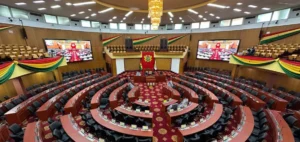EU greenhouse gas emissions totaled 941 million mtCO2e in the first quarter of 2023. Down almost 3% on the same quarter of the previous year, Eurostat reported on August 16.
Greenhouse Gas Emissions in Europe: First Quarter 2023 in view
“This decline took place simultaneously with a 1.2% increase in EU GDP in the first quarter of 2023, compared with the same quarter of 2022,” the bloc’s statistical agency said in a statement.
The economic sectors responsible for most greenhouse gas emissions during this period were: Households (24%)Manufacturing (20%), Electricity and gas supply (19%), Agriculture (13%) and Transportation and storage (10%).
Emissions in the first quarter of 2023 fell in almost all EU countries compared with the same quarter of 2022. Except in Ireland, Latvia, Slovakia, Denmark, Sweden and Finland. The biggest reductions in GHG emissions were seen in Bulgaria, Estonia and Slovenia. Emissions in the fourth quarter of 2022 were 938 million mtC02e. This represents a decline of 4% compared with the fourth quarter of 2021.
Towards a Climate Neutral Europe: EU Emission Reduction Targets Explored
The European Council has set a target for the EU to reduce its greenhouse gas emissions by at least 55% by 2030, compared with 1990 levels. And become climate neutral by 2050. The fall in emissions in the first quarter took place against a backdrop of steadily rising European carbon prices under the EU Emissions Trading Scheme.
EUAs for the December 2023 contract averaged 90.13 euros/mtCO2e in Q1 2023, compared with 83.09 euros/mtCO2 in Q1 2022, according to Platts data. The EUA reached a record level of 100.23 euros/mtCO2e on February 23, according to Platts data. Demand for EEE was also strong. The European Council recently agreed to reform the ETS. Increase carbon reduction ambitions for 2030, detail the abolition of free quotas. Confirm the inclusion of maritime transport and a new ETS II for buildings and road transport. Carbon pricing schemes, such as the EU ETS, are seen as a cost-effective way of reducing greenhouse gas emissions.
The cap-and-trade system limits the amount of emissions covered by different sectors. It accounts for around 45% of the bloc’s total greenhouse gas emissions. Companies can buy and sell carbon permits known as EU allowances. Which can be traded for each tonne of CO2 they emit.






















